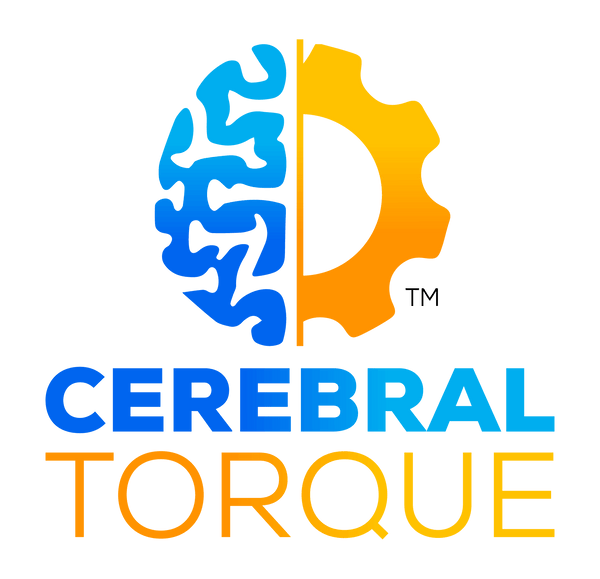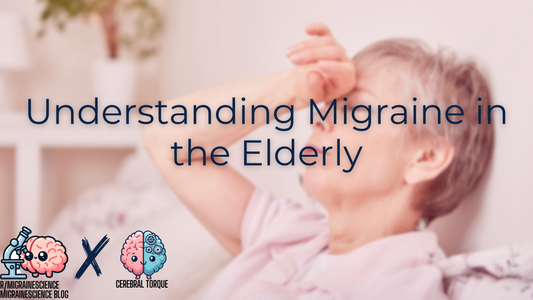
Vestibular Migraine (Acute & Preventive Treatment)
Cerebral TorqueShare
This post is for educational purposes only and may contain errors. Please talk to your neurologist.
Vestibular Migraine Treatment
Treatment Goals
The main goals in treating vestibular migraine are:
- Reduce the frequency, duration, and severity of acute episodic vertigo attacks
- Minimize interictal (between attacks) chronic vestibular symptoms like dizziness and imbalance
- Improve daily functioning, allow return to work/school/driving, and enhance quality of life
- Prevent progression of symptoms and transformation into chronic dizziness disorders
Before we delve into the specific treatments, it is important to note that the efficacy of treatments for vestibular migraine has not been well studied. The data comes from low quality studies, including case studies.
Acute Treatment (see the chart at the end of article for reference)
For relief during acute attacks, options include:
- Vestibular suppressants. First-line. Useful for the symptomatic relief of vertigo and nausea. Utilized when acute attacks last longer than 20-30 minutes. They include:
- Antihistamines (meclizine, dimenhydrinate, diphenhydramine). The vestibular suppressant effects occurs due to their anticholinergic blockade of muscarinic receptors in the inner ear, which reduces vestibular neuron hyperactivity.
- Benzodiazepines (diazepam, lorazepam, clonazepam, and alprazolam). They act as vestibular suppressants via their anxiolytic and sedative properties. They likely reduce vestibular symptoms by damping down overactive vestibular nuclei and anxiety during vertigo episodes.
- Antiemetics (prochlorperazine, promethazine, metoclopramide, and ondansetron). Used primarily to treat nausea and vomiting triggered by acute vertigo through their antidopaminergic effects on the chemoreceptor trigger zone.
- Note: Antiemetics, when given intravenously, have been linked to rare but serious cardiac side effects like a prolonged QT interval and a heart rhythm problem called torsades de pointes. IV antiemetics should be avoided in patients who already have risk factors for these types of heart issues, like existing QT prolongation, hypomagnesemia, or hypokalemia.
- In the emergency department, diphenhydramine and dimenhydrinate (antihistamines) and metoclopramide, ondansetron, prochlorperazine, and promethazine (antiemetics) may be given IV (IM may also be given, but it may cause injection site pain and hence is not preferred). Except for promethazine where caution with IV administration is necessary as it is a vesicant and is caustic and causes tissue injury.
- Triptans. Not routinely used. May help vestibular symptoms by modulating serotonin receptors or inhibiting trigeminovascular activation, but evidence is limited to case reports. They are more likely to benefit if headache is the prominent symptom.
- In one study, rizatriptan prevented the development of motion sickness and severe motion sickness symptoms in patients with vestibular migraine. https://pubmed.ncbi.nlm.nih.gov/16369474/
- Another study suggested the benefit of zolmitriptan may benefit vestibular migraine patients, but the study had a small sample size and large confidence intervals. https://n.neurology.org/content/60/5/882
Preventive Treatment (without medication):
- Avoidance of triggers like sleep deprivation, fasting, stress, hormonal fluctuations, and visual/motion stimuli may provide modest relief if reliably identified. This is often challenging and is of little efficacy in vestibular migraine.
- Hydration, rest, compression stockings, and scopolamine may help if traveling is a consistent trigger.
Preventive Treatment (with medication):
Daily preventive medications aim to reduce attack frequency and severity. The rationale is to dampen down proposed vestibular-trigeminal-autonomic pathways implicated in vestibular migraine.
Choosing the optimal preventive medication for vestibular migraine is guided by migraine comorbidities, side effect profile, medication interactions, and treatment response. The decision to start preventive therapy is the same as migraine, which we discussed here:
https://www.cerebraltorque.com/blogs/migrainescience/when-should-i-start-migraine-prevention-therapy
Almost all migraine preventive medications have been shown to be potentially useful in vestibular migraine. However, the general approach, without considering comorbidities or side effect profiles is as follows:
- Beta blockers like propranolol, nadolol, atenolol, metoprolol. These are good first line options. They inhibit catecholaminergic activation linked to migraine pathophysiology. They may also improve motion sickness susceptibility.
- Tricyclic antidepressants like amitriptyline or nortriptyline. They inhibit norepinephrine and serotonin reuptake. This enhances inhibitory transmission and may modulate trigeminal sensory pathways.
- Anticonvulsants like topiramate, sodium valproate, lamotrigine. Topiramate has the best evidence for vestibular migraine prevention. They have multiple mechanisms including blockade of voltage-gated sodium and calcium channels, enhancement of GABAergic transmission, and inhibition of glutamate release. These actions may stabilize neuronal hyperexcitability.
- SNRIs like venlafaxine, duloxetine enhances serotonin and norepinephrine availability. They may be preferred when there is comorbid persistent postural-perceptual dizziness (PPPD), anxiety, depression, and when vestibular symptoms are prominent.
- Calcium channel blockers like verapamil. May help if migraine aura is prominent. They may inhibit cortical spreading depression and calcium channel dysfunction hypothesized in migraine and vestibular migraine.
Other treatment approaches include:
- Treating comorbid conditions like PPPD, benign paroxysmal positional vertigo (BPPV), mood and anxiety disorders.
- SSRIs are generally avoided as SNRIs are better for migraine prevention. However, SSRIs may be useful in a select few patients such as those with generalized anxiety disorder.
- Vestibular rehabilitation can help with gaze and balance exercises to desensitize visual motion sensitivity triggers. This method is unlikely to be helpful if the patient has no interictal symptoms with no identifiable triggers.
- Cognitive behavioral therapy aims to reduce anxiety and hypervigilance to dizziness symptoms. Stress management is also an important component.
- While not commonly used for migraine (unless it’s familial hemiplegic migraine) or vertigo, some evidence suggests acetazolamide may be effective for preventing vestibular migraine attacks. This is possibly due to a similar mechanism to its proven efficacy in preventing attacks of episodic ataxia type 2 (EA2), a condition that has symptom overlap with vestibular migraine. More research is needed to confirm its efficacy and safety in this setting.
- Anti-CGRP monoclonal antibodies and gepants may be effective in the treatment for vestibular migraine. Calcitonin gene-related peptide (CGRP) receptors are present in the vestibular apparatus, suggesting CGRP signaling may play a role in vestibular disorders.
| Medications for acute vertigo | Dose as-needed |
|---|---|
| PO drugs | |
| Antihistamines, first-generation |
|
| Benzodiazepines |
|
| Antiemetics |
|
| Parenteral administration (Healthcare setting) | |
| Antihistamines, first-generation |
|
| Antiemetics |
|

